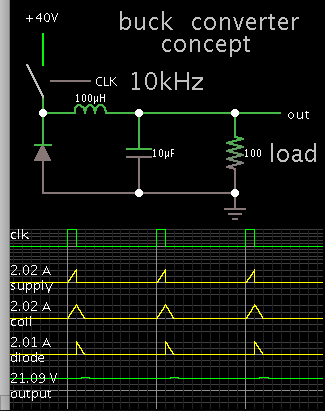M.Rehan
Full Member level 2
Can Someone simulate buck converter on proteus
Switching frequency 2kHz

View attachment Proteus.rar Proteus File
Switching frequency 2kHz

View attachment Proteus.rar Proteus File
Follow along with the video below to see how to install our site as a web app on your home screen.
Note: This feature may not be available in some browsers.

I thought the same, but the gate driver has a floating supply and can work. A bootstrap circuit could be a practical way to avoid the isolated power supply.Q3 is configured as a source follower so it is never fully on, thus its dissipation will be high and the converter efficiency will be low.
It requires 50V at the gate to fully turn on (10V above the supply voltage), so you need a bootstrap driver for that.
True. I missed that at first glance.................
I thought the same, but the gate driver has a floating supply and can work. A bootstrap circuit could be a practical way to avoid the isolated power supply.

It's not possible. You need an auxiliary supply, e.g. a charge pump circuit to maintain a gate voltage above the positive supply. It's also important to reduce the quiescent current in on-state. Static current consumption as caused by R7 is unwanted.Is it possible to achieve 100% duty cycle in case of buck converter using bootstrap circuit (IR2110)?